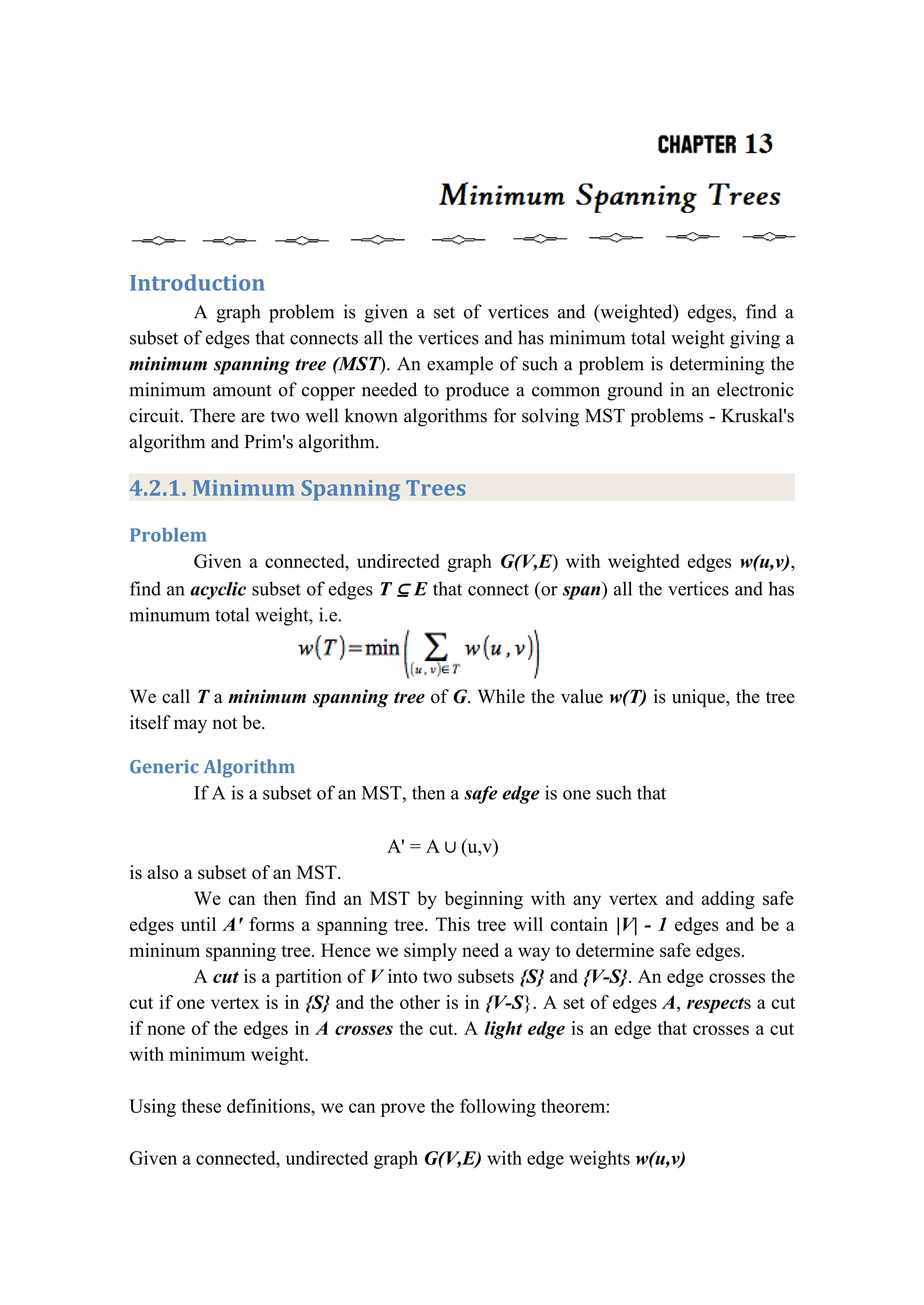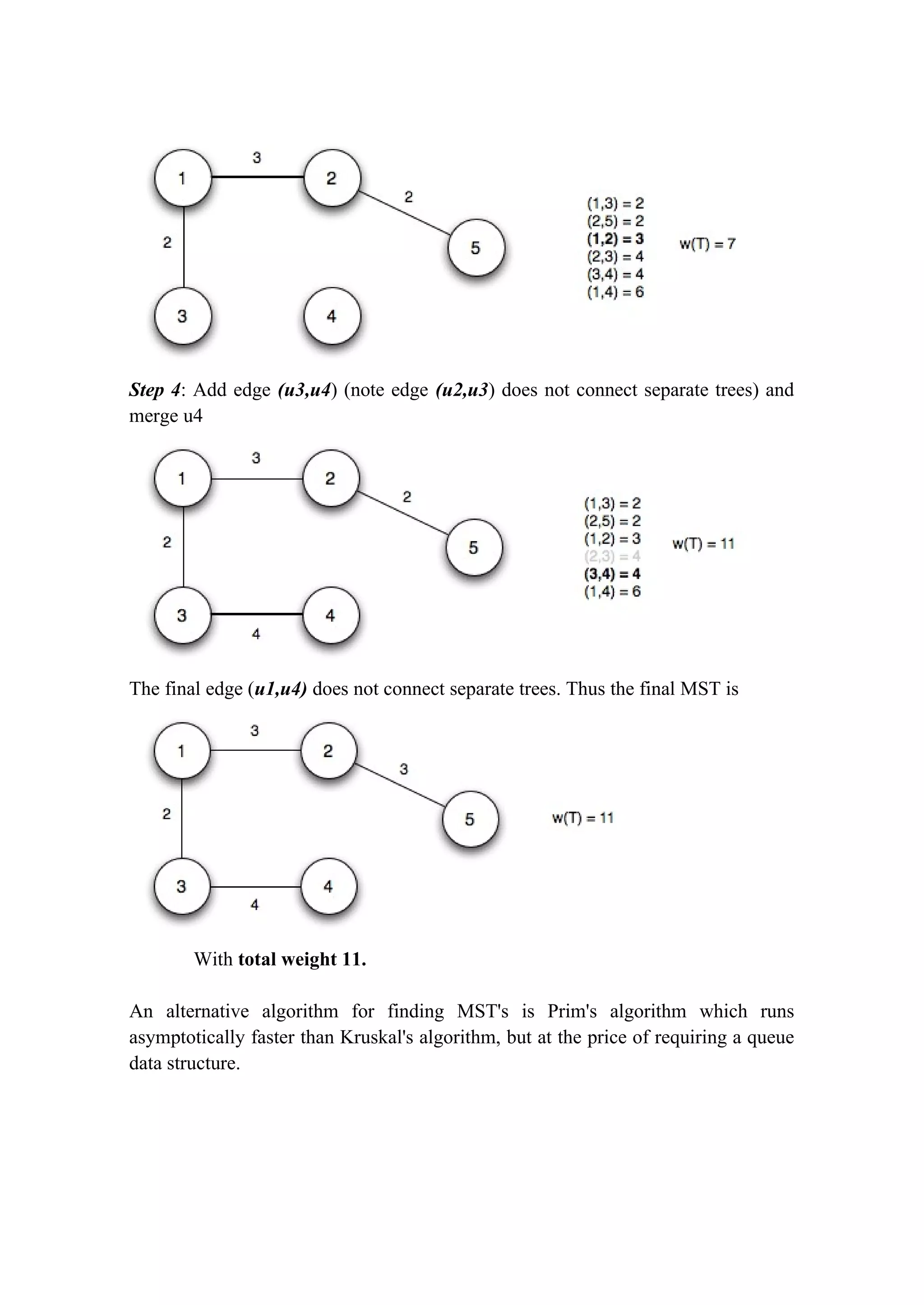The document discusses algorithms for finding minimum spanning trees (MSTs) in graphs. It describes:
1) The minimum spanning tree problem of finding a subset of edges in a graph that connects all vertices with minimum total weight.
2) Two algorithms - Kruskal's algorithm and Prim's algorithm - for solving this problem by growing an MST one edge at a time.
3) Kruskal's algorithm sorts edges by weight and adds edges between trees until all vertices are connected, running in O(E log V) time.
4) Prim's algorithm grows the MST from an initial vertex by adding minimum weight edges between the current tree and other vertices, using a priority queue




![4.2.3. Prim's Algorithm
Prim's algorithm finds MST's by growing the MST by adding light edges
between the current tree and other vertices. The vertices are stored in a minimum
priority queue based on the smallest weigh edge connecting vertices currently not
in the tree with a vertex in the tree.
Algorithm
MST-PRIM(G,w,r)
1. for each u ∈ G.V
2. u.key = ∞
3. u.pi = NIL
4. r.key = 0
5. Q = G.V
6. while Q ≠ ∅
7. u = EXTRACT-MIN(Q)
8. for each v ∈ G.Adj[u]
9. if v ∈ Q and w(u,v) < v.key
10. v.pi = u
11. v.key = w(u,v)
Basically the algorithm works as follows:
1. Initialize Q and set the source (root) key to 0
2. While Q is not empty, dequeue the vertex with minimum weight edge and
add it to the tree by adding edge (u.π,u) to T
3. For each vertex v in Adj[u] that is still in Q, check if w(u,v) (the edge
weights from u for all vertices not in T) are less than the current v.key (the
current smallest edge weight) and if so update the predecessor and key
fields
The run time of Prim's algorithm depends on the implementation of the priority
queue, but can be made to run in O(E + V lg V) using a Fibonacci heap for the
priority queue.
Example
Using the same undirected graph from here](https://image.slidesharecdn.com/daachapter13-200419170156/75/Daa-chapter13-5-2048.jpg)


